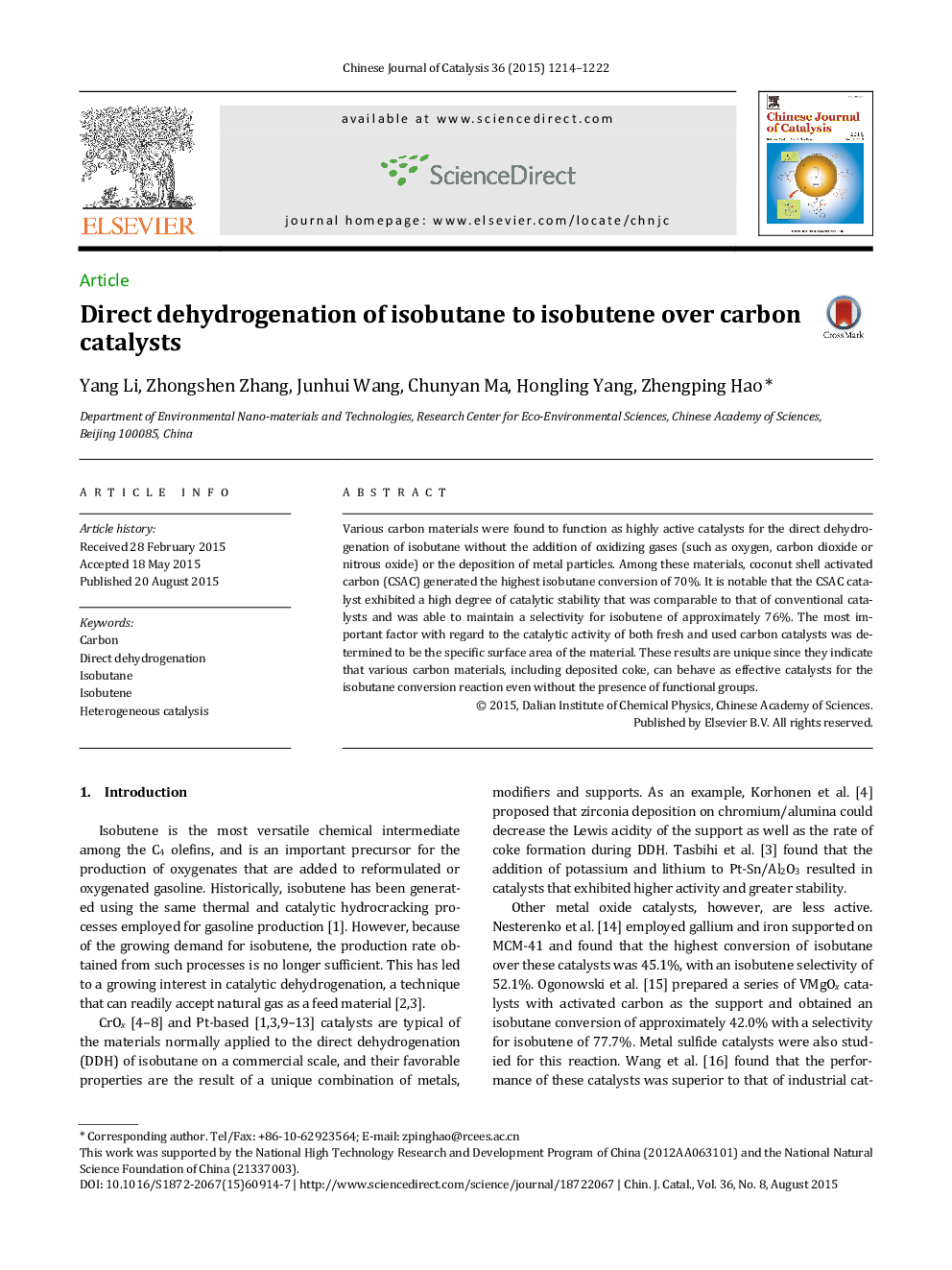| کد مقاله | کد نشریه | سال انتشار | مقاله انگلیسی | نسخه تمام متن |
|---|---|---|---|---|
| 59477 | 1419428 | 2015 | 9 صفحه PDF | دانلود رایگان |

Various carbon materials were found to function as highly active catalysts for the direct dehydrogenation of isobutane without the addition of oxidizing gases (such as oxygen, carbon dioxide or nitrous oxide) or the deposition of metal particles. Among these materials, coconut shell activated carbon (CSAC) generated the highest isobutane conversion of 70%. It is notable that the CSAC catalyst exhibited a high degree of catalytic stability that was comparable to that of conventional catalysts and was able to maintain a selectivity for isobutene of approximately 76%. The most important factor with regard to the catalytic activity of both fresh and used carbon catalysts was determined to be the specific surface area of the material. These results are unique since they indicate that various carbon materials, including deposited coke, can behave as effective catalysts for the isobutane conversion reaction even without the presence of functional groups.
Graphical AbstractVarious carbon materials were applied as catalysts for the direct dehydrogenation of isobutane. Coconut shell activated carbon exhibited a high conversion value of 70% and superior catalytic stability compared with conventional catalysts. Carbon materials (including coke) lacking functional groups were found to function as effective catalysts.Figure optionsDownload as PowerPoint slide
Journal: Chinese Journal of Catalysis - Volume 36, Issue 8, August 2015, Pages 1214–1222